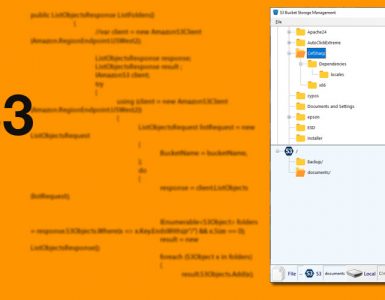I recently participated in an exciting integration project in which we integrated into the Clearent Cloud-Based solution.
In this article, I share with you some of the highlights of the project.
About Clearent
Clearent is a full-service payment solution provider with more than 400 employees, 45,000 merchants, and $16 billion in processing volume. From traditional point-of-sale terminals, mobile solutions, and tablet-based systems to a custom-built virtual terminal, e-commerce plug-ins and hosted payments, Clearent helps small business owners securely accept payments just about anywhere. To learn more, visit clearent.com.
Clearent Solution
Clearent’s Cloud EMV solution puts the processes into the cloud, thus providing a single point of access to manage all transactions, regardless of device lines or payment methods.
To put the benefits of this integration into perspective, let’s look at integration into Pax.
If you use Pax POSLink SDK, you will need to communicate with your device in a TCP mode. In TCP mode, you can only communicate with your terminal if your POS on the same network. In other words, if your Pax PinPad on the network has the IP address of 192.168.1.25 and your POS system show an IP address of 10.1.10.25, your POS will never reach the Pax PinPad, and you will not be able to process a card-present transaction.
Now, let’s see how a Cloud-Based payment system handles the above scenario.
Regardless of its local IP address (on the network), your Pax PinPad communicates with cloud-based software. Your POS software sends a payment request to an endpoint, and at that endpoint, a call to the Pax PinPad performs the transaction. The results of the transaction (Approved or Declined, etc.) return to the cloud, and then from the cloud, it gets delivered to your POS software.

In a cloud-based platform, you could launch a terminal from anywhere.
The other great benefit of using a Clearent integration is that you will be able to run card-not-present transactions on the same platform and the card-present. Therefore, if your transaction produces a token for the transaction, you can share the token between the two and run transactions.
For example:
An eCommerce transaction takes place on your website. The transaction generates a token, and you store that token.
The next time when the same customer visits your website, you don’t need to capture the credit card details (Unless the customer wants to use a new card). You can perform a transaction by using the token that you had obtained in the last visit.
Now, imagine the same customer comes to your store and makes a purchase. Your POS software could send the transaction to the Pax PinPad, with the same token, from the online shopping to perform a sale.
The Downside
The only downside in an integration such as this is that you have to use Clearent as your merchant account provider. In other words, you cannot use Clearnet integration and use a different credit card processing company to process your payments.
Pi Integration
Pi (Payment Innovators) provides a processor-agnostic platform. An agnostic platform is a platform for all software developers to be able to add credit card processing to their software by merely integrating into Pi. While Pi endpoint takes care of the communications with the payment device, your software could process with any processor you wish.
Why Pi integrated into Clearent?
The answer is quite simple; If your software uses Pi integration, then you have the option of using Clearnet as your processor without changing any code.
Imagine the nightmare of switching a processor to another processor. Think about re-writing your software for the sole purpose of a new integration into a Cloud-Based platform!





